All-inclusive about front tooth crowns
Front tooth crowns are essentially artificial teeth designed to protect partially damaged teeth. They are typically about 2mm thick and are commonly made of porcelain to mimic the shape and color of natural teeth. Since front tooth crowns are not only designed for functionality but also for aesthetics and to shield the patient’s teeth from further damage, it is crucial to select the right material, properly implant the crown, and adjust its fit to prevent complications.
What is a front tooth crown?
Front tooth crowns are a type of dental restoration that helps protect partially damaged teeth. They play a crucial role in restoring the beauty of a smile, boosting confidence, and restoring biting function in the front of the mouth. The crown is fixed onto the tooth and stays in place, requiring the removal of any decayed or damaged portions, and sometimes reshaping the tooth.
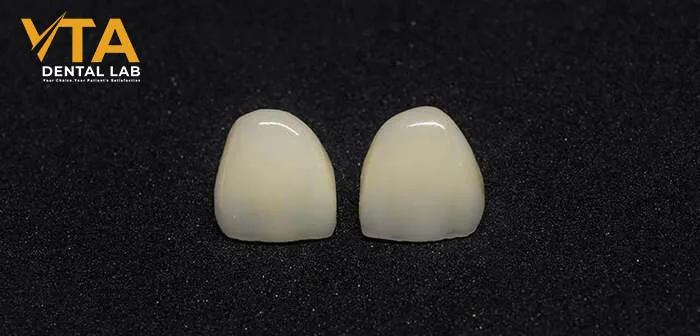
Front tooth crowns are typically about 2 millimeters thick and are crafted from porcelain to ensure a seamless appearance with the surrounding teeth. Additionally, gold or porcelain-fused-to-metal (PFM) materials are not preferred for front tooth restorations, as the metal edges may become visible over time, compromising aesthetics. Instead, zirconia is commonly used due to its high durability and superior aesthetic appeal.
Why Are Front Tooth Crowns Different from Crowns in Other Areas of the Mouth?
Front tooth crowns are designed and crafted with a strong emphasis on aesthetics because they are located in the visible smile zone. Their shape and size are unique, requiring a custom design that seamlessly aligns with the natural gum line and neighboring teeth. Color matching is also crucial to achieving a natural and harmonious appearance, ensuring consistency in shade and translucency with surrounding teeth. Porcelain materials are commonly preferred, though in some cases, patients may choose a combination of materials for their restorations.
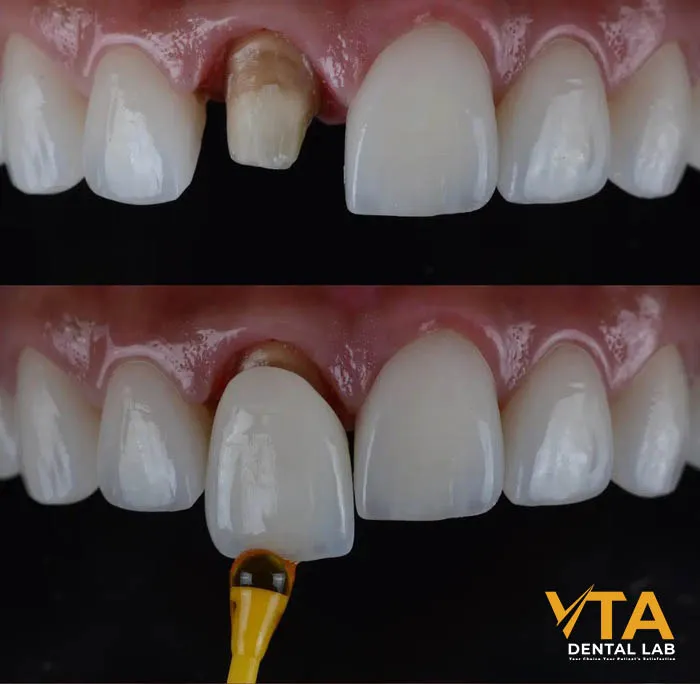
Unlike other teeth, front teeth primarily function for biting and tearing food. Therefore, front tooth crowns must be precisely fitted to allow for natural function. Additionally, fabricating front tooth crowns involves advanced layering techniques to replicate natural enamel’s color and light-reflecting properties. When using zirconia, specialized staining and polishing techniques are necessary to achieve the appropriate translucency and aesthetic appeal.
Indications for Using Front Tooth Crowns
Front tooth crowns are typically recommended in specific cases. The most common indication is severe tooth decay, which can lead to cavities caused by acid and bacterial erosion. While minor cavities can be restored with dental fillings, larger areas of decay benefit from the added protection of a crown.
Additionally, if a front tooth sustains significant damage due to trauma or an accident, resulting in noticeable chipping, a crown can be used to restore both aesthetics and function.
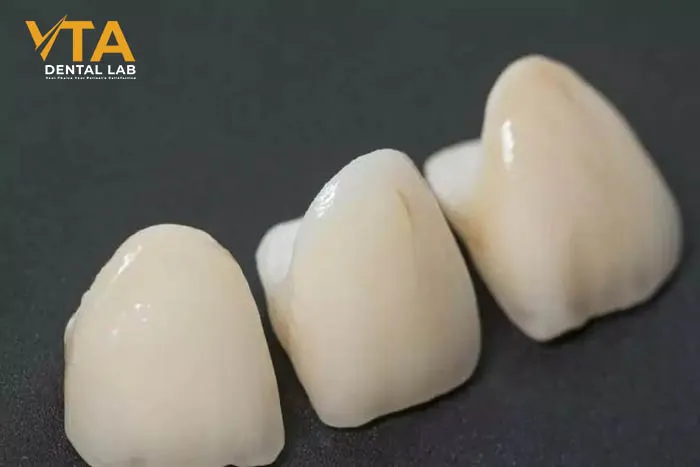
In less common cases, front tooth crowns may be necessary after a root canal treatment to address severe damage or infection. Since the space between the outer surface and the tooth’s pulp is smaller in front teeth, the procedure is generally simpler. After a root canal, a crown is placed over the treated tooth to reinforce its strength and durability.
Suitable Materials for Front Tooth Crowns
Restoring front teeth requires not only durability and functionality but also a high level of aesthetics and biocompatibility. The choice of material should balance these factors while also considering patient preferences, dentist recommendations, and clinical conditions. Below are some of the most commonly used materials for front tooth crowns:
Layered Zirconia and HT Zirconia
Zirconia Layered and HT Zirconia are among the most popular choices for front tooth restorations. Their multi-layered porcelain structure provides a highly natural look with excellent translucency, allowing light to pass through for a more lifelike appearance. Additionally, zirconia crowns maintain long-lasting aesthetics, and exceptional biocompatibility, and remain stable over time without discoloration.
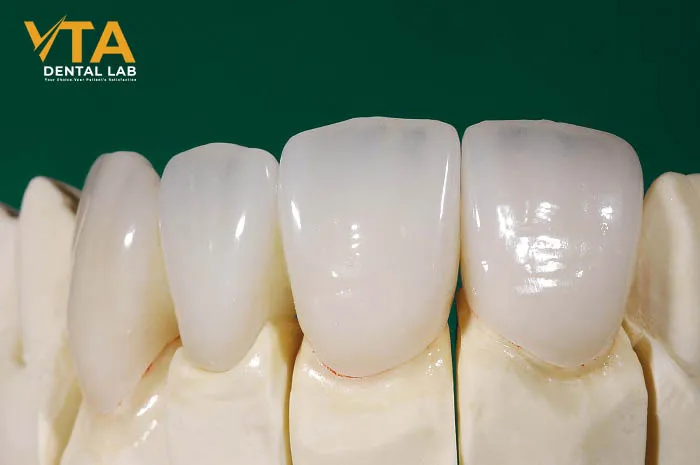
IPS e.max Crowns
For cases where aesthetics are the top priority, IPS e.max is a leading choice. This material offers natural translucency and high flexural strength, ensuring both durability and superior esthetics. IPS e.max is also highly biocompatible, making it suitable for patients with metal allergies as it does not trigger any adverse reactions in the mouth.
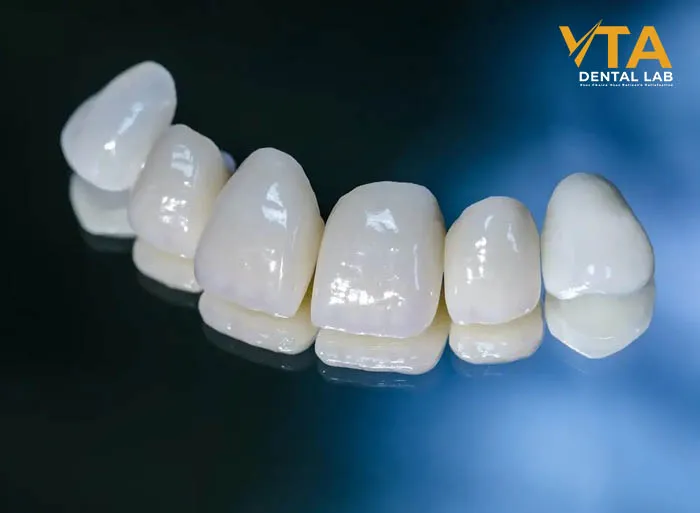
Solid Zirconia for front tooth crowns
While solid zirconia crowns may not match the aesthetic appeal of Layered Zirconia, HT Zirconia, or IPS e.max, they offer superior durability. They are ideal for patients with bruxism (teeth grinding) or those prone to chipping, thanks to their exceptional strength and resistance to wear. Additionally, solid zirconia is highly biocompatible and resistant to acid erosion in the mouth, ensuring long-term stability.
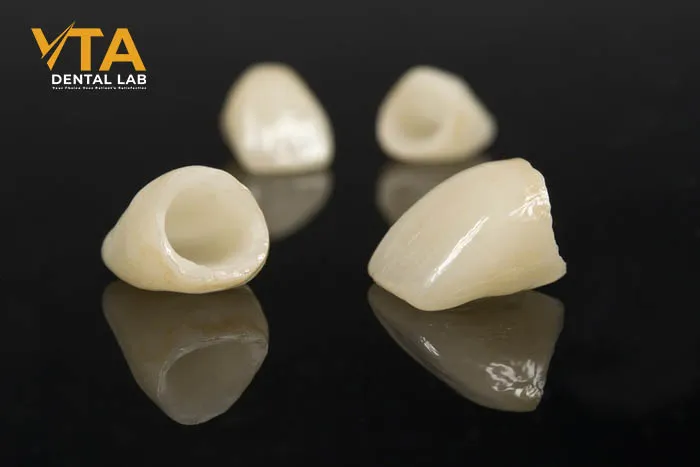
Porcelain Fused to Metal (PFM) Crowns
PFM crowns are less commonly used for front teeth but remain an option. They combine the strength of a metal base with the aesthetic qualities of porcelain. However, over time, issues such as gum recession may expose the metal margin, compromising aesthetics. Additionally, the metal core can create a darkening effect when exposed to light, reducing the natural appearance of the restoration.
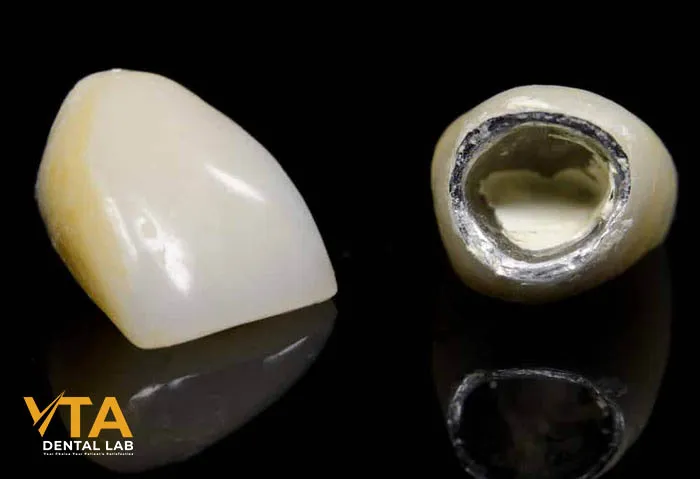
Custom Front Tooth Crowns at VTA Dental Lab
At VTA Dental Lab, we offer a wide range of front tooth crowns made from ceramic, porcelain, and metal to suit various cases and individual patient needs. If you’d like to discuss a specific case, feel free to contact us or send in your first case. Our team of experienced technicians is always ready to assist you.